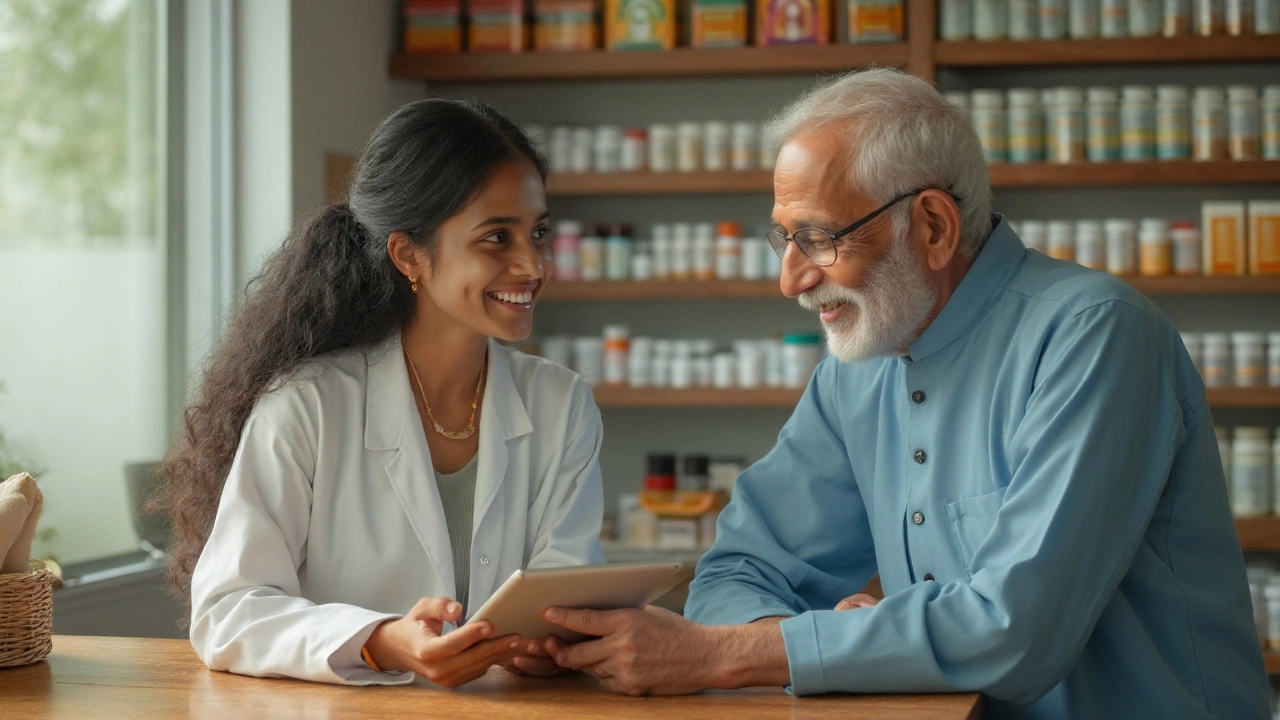Pharmacist‑Patient Communication: How to Build Trust Effectively
Learn practical ways pharmacists can improve communication with patients to boost trust, enhance adherence, and ensure safer medication outcomes.
Continue ReadingWorking behind the counter means you talk to people who are often confused, worried, or in a hurry. Good communication isn’t a luxury—it’s a safety tool. When you explain a medication clearly, you cut mistakes, boost confidence, and make the pharmacy feel like a friendly place.
Skip the medical jargon. Instead of saying “Take one tablet BID,” say “Take one tablet twice a day, morning and evening.” Use the patient’s own words when you can, and repeat the main point. A quick “Do you understand?” followed by a yes or a question helps you catch gaps right away.
Ask open‑ended questions like “How do you usually take your medicines?” or “What worries you about this new drug?” Listen without interrupting, then repeat back the key details. For example, “So you’ll take the pill with food in the morning and at bedtime, right?” This echo technique shows you’re paying attention and gives the patient a chance to correct you.
When you hand over a prescription, point out the most important safety tip first. If a medicine can cause drowsiness, say, “This one may make you sleepy, so avoid driving for a few hours.” Keeping the priority tip at the front makes it stick in the patient’s mind.
Use visual aids whenever possible. A short diagram of how to use an inhaler or a color‑coded schedule can turn a long explanation into a quick glance. Many patients remember pictures better than spoken words.
Be mindful of tone and body language. A calm voice, eye contact, and a smile signal that you care. Even a brief “I’m glad you asked that” can turn a nervous question into a conversation.
Don’t forget follow‑up. Offer a quick phone number or tell them to swing by if they have side effects. “If you feel dizzy or have a rash, call us right away” gives them a clear action plan.
Finally, keep learning. Role‑play with a coworker once a month, or watch a short video on patient counseling. The more you practice, the easier it gets to blend empathy with accurate info.
Great pharmacist communication is a mix of plain language, active listening, and clear safety pointers. Apply these habits daily and you’ll see fewer questions, fewer errors, and happier patients walking out of the pharmacy.

Learn practical ways pharmacists can improve communication with patients to boost trust, enhance adherence, and ensure safer medication outcomes.
Continue Reading